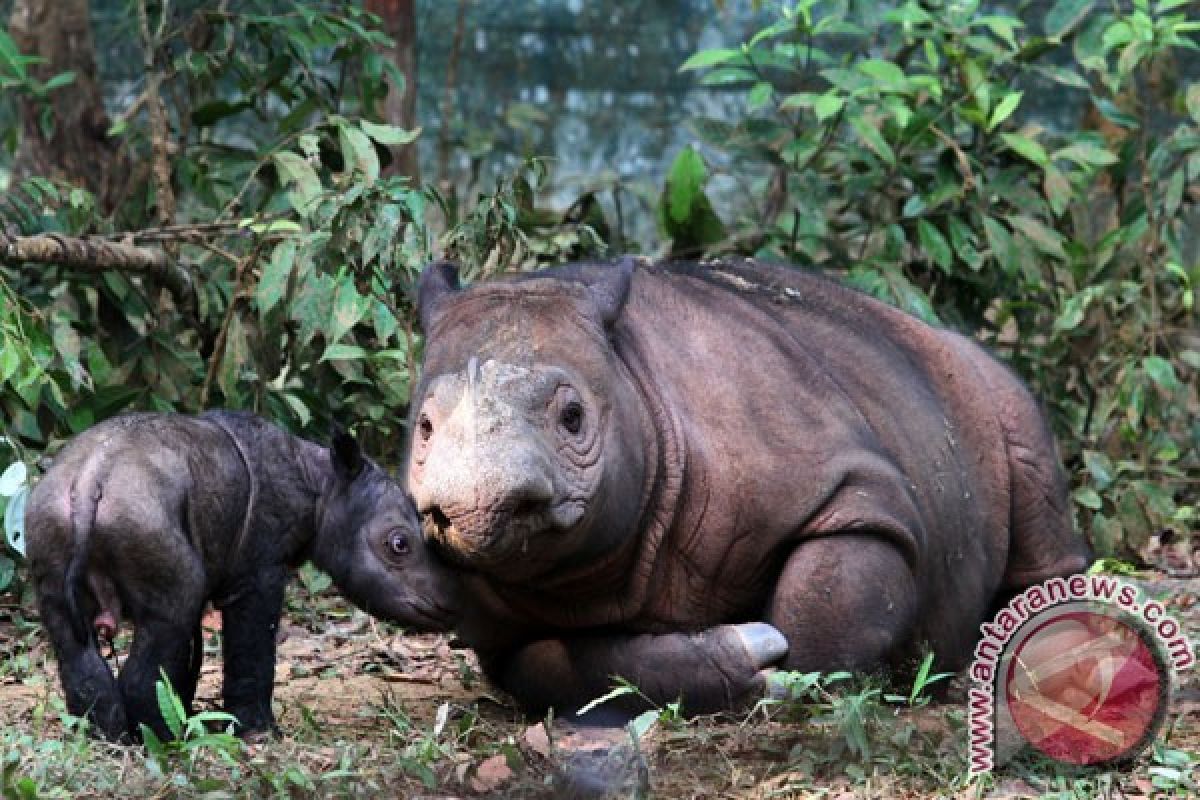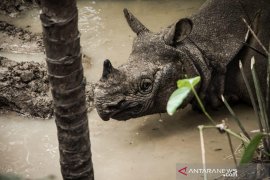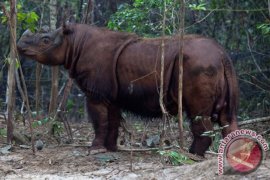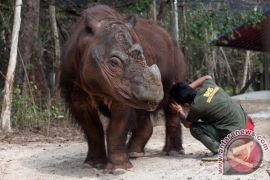The theme of this year`s World Rhino Day was "Five Rhino Species Forever," aimed at raising awareness about the plight of five threatened rhino species.
Only five species of rhinos have survived globally, with two of them living in Indonesia, namely the Sumatran rhino (Dicerorhinus sumatrensis) and the Javanese rhino (Rhinoceror sondaicus).
The remaining three species are the Indian rhino, which can be found in Nepal, India and Bhutan, the white rhino, commonly found in Botswana, the Ivory Coast, Congo, Kenya, Namibia, South Africa, Swaziland, Zambia and Zimbabwe, and the black rhino in Cameron, Kenya, South Africa, Tanzania, Namibia, Ethiopia, Rwanda, Swaziland, Zimbabwe, Zambia and Botswana.
The World Rhino Day was first announced by the World Wildlife Federation (WWF)-South Africa in 2010. The following year, the celebration of World Rhino Day grew into an international success, encompassing both African and Asian rhino species.
WWF stated that it had celebrated the function with a renewed sense of urgency this year, owing to a global increase in poaching, which is pushing rhinos towards extinction.
The poaching of the rhino is still rampant in many parts of the world, because of a high demand for the rhino`s horn, which is believed to have certain curative properties. In the Indian state of Assam, for instance, at least 26 greater one-horned rhinos were massacred for their horns during the first five months of 2013.
In South Africa, a total of 688 rhinos have been killed so far this year. According to the WWF, illegal poaching has jumped by 5,000 percent in South Africa since 2007.
"Every single rhino is under the threat of poaching at the moment," Barney Long, the Director of WWF`s Species Conservation Program, pointed out.
The Javanese and Sumatran rhinos are also on the brink of extinction because of poaching, forest conversion into plantation areas and illegal logging activities.
The Javan rhino was declared extinct in Vietnam in 2010, leaving only a small population that is struggling for survival on the Indonesian island of Java.
The population of the endangered Javan rhinos has been pegged at about 50 in the Ujung Kulon National Park in the Banten Province.
Also, there are about 200 Sumatran rhinos currently living in the Mount Leuser National Park (Aceh), South Bukit Barisan (West Lampung-Bengkulu), and Way Kambas (East Lampung).
WWF Indonesia, however, estimated that Sumatran rhinos were by far the most vulnerable species, with a fewer than 100 found in the wild today. Some worry that they will become extinct like the western black rhinoceros in 2011.
"The remaining Javan and Sumatran rhinos are in critical need of attention and support, as they are teetering on the brink. Multiple threats face the species including, a small population size, fragmented populations, poaching, disease and natural disasters. But as we have done with white, black and Indian rhinos, we can recover these species if the world starts paying attention to their needs," Long noted.
WWF Indonesia had organized an event called "Moving For Rhino" at around Hotel Indonesia Circle to celebrate World Rhino Day on September 22.
World Rhino Day was also celebrated in Cisarua, West Java, by the management of the Indonesian Safari Park (TSI) in cooperation with the Indonesia Rhino Foundation (YABI).
"The TSI celebrated the fourth annual World Rhino Day on Sunday, September 22, to raise awareness about protecting the rhinoceros from the deadly practice of poaching," TSI Director Frans Manansang stated.
Public awareness needed to be instilled at the earliest age to help the conservation of the Javan rhinos, Haryono, the head of the Ujung Kulon National Park said.
For this purpose, the Park`s management had organized a rhino costume festival and coloring contest for children.
The Ujung Kulon National Park is the habitat of one-horned Javan rhinoceros and the largest tropical forest on the Java Island. The population of Javan rhinos in the park has exhibited a growth trend of not more than one percent annually. Meanwhile, the government of Indonesia is targeting a three percent annual growth rate.
While commemorating the World Environment Day in Jakarta on June 5, 2012, Indonesian President Susilo Bambang Yudhoyono had inaugurated the International Rhino Year 2012 in a bid to mobilize global efforts to conserve and protect the wild animal from extinction.
The launching of the International Rhino Year 2012 was part of a mandate from the International Union for Conservation of Nature (IUCN), which is supported by 11 countries that have rhino population, including Mozambique, Namibia, South Africa, Bhutan, Nepal, India, Zimbabwe and Malaysia.
"The International Rhino Year is meant to provide momentum and access for increasing international cooperation in the conservation of rhinos in our country," Yudhoyono said.
Indonesian Forestry Minister Zulkifli Hasan also reiterated that Indonesia cared for the conservation of the rhino population. The ministry has allocated Rp6 trillion (over US$6 billion) for such activities, including for the conservation of the rare species.
The ministry will also follow an Action Plan of Javanese Rhino Conservation until 2017, and hopes it will help increase the Javan rhino population to 70 by 2015.
The private sector has been encouraged to participate in the rhino conservation program by establishing a partnership with the Indonesian Rhino Foundation (YABI).
On October 2 and 3, a ministerial level meeting will be held to discuss the Asian rhinoceros in Bandarlampung in the Lampung Province of Sumatra Island.
A number of Indonesian and foreign experts on Asian rhinoceros will participate in the meeting, which will discuss the current state of Asian rhinos, Noverica Widjojo, a spokesman of WWF For Nature Indonesia, revealed recently.
(f001/INE)
EDITED BY INE
(KR-BSR/F001)
Reporter: Fardah
Editor: Jafar M Sidik
Copyright © ANTARA 2013












